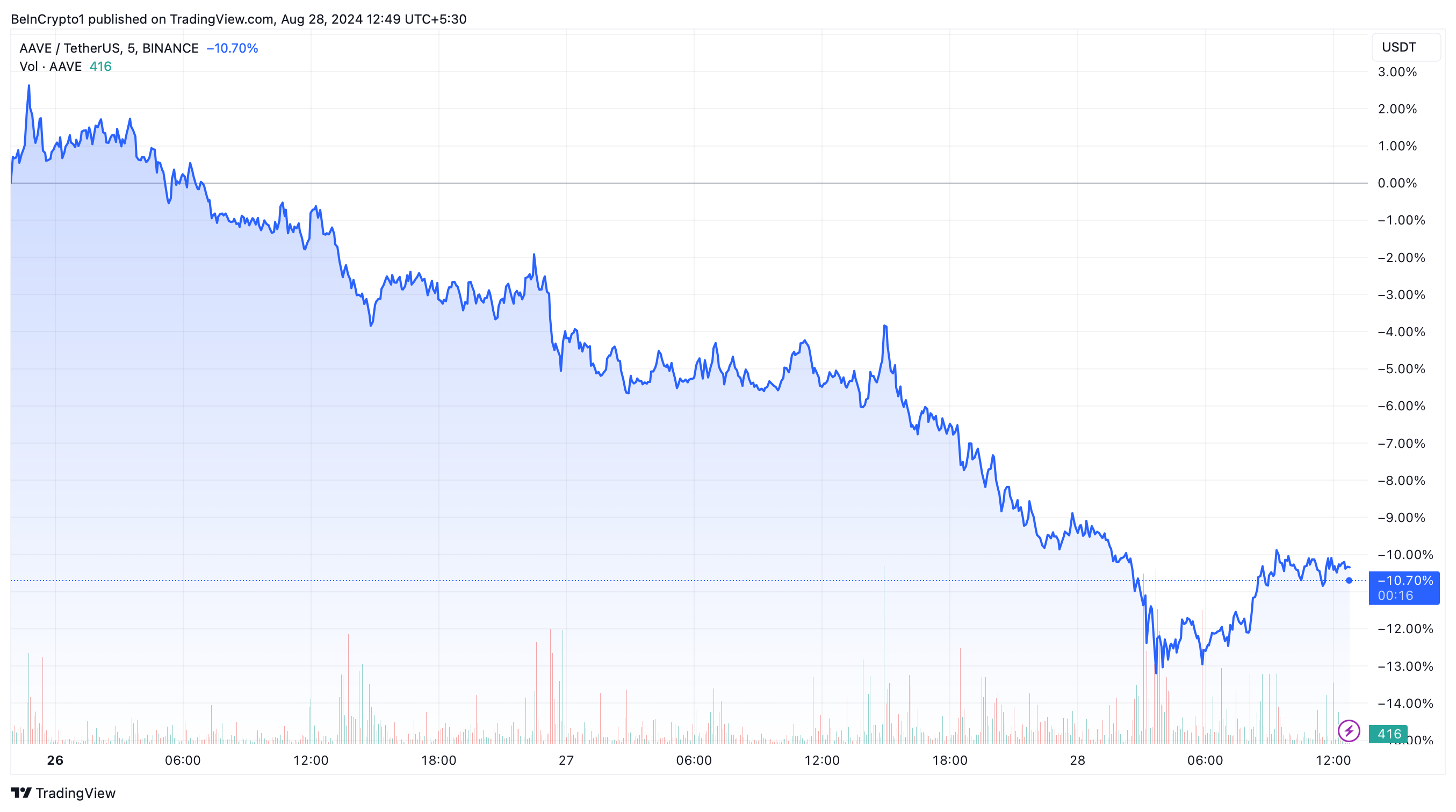Despite a promising partnership proposal with BlackRock, Aave’s token continues to decline this week. The integration plan, involving BlackRock’s USD Institutional Digital Liquidity (BUIDL) fund and Aave’s platform, has yet to influence the token’s short-term performance positively.
Aave aims to revamp its GHO Stability Module (GSM), which is central to managing its stablecoin, GHO, within the Aave ecosystem. By leveraging BlackRock’s BUIDL fund, this strategic initiative is poised to enhance the efficiency of its stablecoin system and allow its decentralized autonomous organization (DAO) to tap into real-world assets.
SponsoredAave Proposes to Utilize BlackRock’s BUIDL Fund
Specifically, the revised GSM is designed to ensure stable 1:1 convertibility of GHO with USDC. This will help optimize capital use and maintain strong backing standards.
Moreover, the proposal introduces a new model for effectively using the surplus USDC, which is currently idle.
“Aave Labs proposes to create a new GSM instance that supports external integrations and control mechanisms, specifically tailored for BlackRock’s BUIDL,” the Aave team explained.
Read more: What Are Tokenized Real-World Assets (RWA)?
This setup will facilitate fixed-ratio swaps between USDC and GHO. It will also enable the minting and burning BUIDL tokens in response to user demand. This aims to mirror the seamless exchange experience the existing GHO: USDC GSM provides.
Additionally, this move aligns with Aave’s goal to deploy a more capital-efficient system while adhering to high safety and backing standards as provided by USDC. Hence, the potential inclusion of a USDC buffer to offset transaction costs for small swaps is also under consideration.
SponsoredBlackRock’s involvement through its BUIDL fund is crucial, offering on-chain access to traditional financial assets. This collaboration marks a significant bridge between traditional finance mechanisms and the efficiencies of blockchain technology. Importantly, the BUIDL fund has seen high activity, with dividends exceeding $2 million in July, up 16% from June.
Despite these strategic efforts, the AAVE token’s market response remains lukewarm. So far this week, the token is down by around 10%, currently trading at $121. The broader market downturn might also be influencing the token’s performance.
Read more: Aave (AAVE) Price Prediction 2024/2025/2030

Nevertheless, the Aave community remains optimistic. With ongoing enhancements and the incorporation of real-world financial mechanisms, many anticipate that this will drive broader adoption and yield long-term benefits for the token.
“Exciting development for what will drive the next wave of mass adoption,” Emilio commented.
The forthcoming steps include gathering community feedback, which, if positive, will advance the proposal to the Snapshot stage for a formal consensus.
Moreover, in an interview with BeInCrypto, Aave Labs Founder Stani Kulechov highlighted how the DAO is trying to implement the BUIDL GSM module.
“The development of the BUIDL GSM module is the Aave DAO and ecosystem’s first step towards integrating RWAs at scale. This implementation specifically involves GHO, which has a dynamic and flexible architecture, enabling diversified risk exposure through different Facilitators, chosen by the DAO. Facilitators can be configured granularly to manage exposure to different risks and collateral categories,” Kulechov told BeInCrypto.

